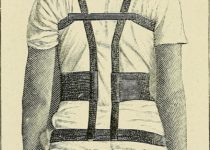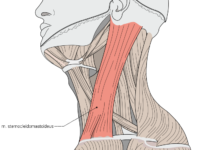Should You Do Isometric Stretching?
Isometric stretching is a newly discovered method to increase flexibility and strength. During the past years, it's popularity has been constantly increasing due to the benefits of the method.
It is one of the most effective methods to improve passive static flexibility, which is why you should consider integrating it into your routine.
Before we get started, we have to explain what isometric stretching actually is.
Isometric Stretching Definition
Basically Isometric Stretching is a type of static stretching, whereas the muscle tissue doesn't move during the stretch. The difference to conventional static passive stretching is, that you contract the muscle before doing the stretch.
Therefore isometric stretching is also proven to strengthen the stretched muscle groups. This aspect of strength does also improves static active flexibility.
Overall, the technique is more effective than passive stretching, increasing your range of motion in a short period of time.
The problem with isometric stretching is, that it puts a lot of pressure onto your muscles & joints, which is why it shouldn't be done more than once a day.
How To Do Isometric Stretching
Now that you've understood the fundamentals of what isometric stretching is, it is important to know how to perform isometric stretches.
The process can be divided into three simple steps which are:
- assume the position of a passive stretch (which stretches the desired muscle)
- Tense the stretched muscle for 7-15sec
- Relax the muscle for at least 20 seconds
One important thing to note regarding (2) is that you are not allowed to move the stretched muscle during the contraction phase.
With some stretches that might mean having a partner to avoid your body part from moving, or using another object (wall or the floor etc) to add manual resistance.
Examples:
To give you some ideas of isometric stretches I've listed examples, to help you integrate isometric stretching in your stretching routine.
Straight Leg Pull Stretch
One example of a partner assisted PNF stretch could be to start by laying on your back. One knee is going to be bend, whereas you try to bring the other leg as far up as you can.
Now you are going to use a partner holding your leg, while gently pulling it towards your chest. On the other side, you are going to try to push your leg down by contracting your muscles for 7-15 seconds.
Take a short break and repeat the stretch again, to gain the most passive flexibility.
Wall Calf Stretch
This stretch uses a wall to add external resistance. Start facing a wall with your feet apart, while the front leg is bent.
Try to keep your back leg straight, while pushing your heel to the floor. Also, try to push against the wall as much as you can.
Calf Stretch
A simple example of using your own body to use passive resistance would be this isometric calf stretch. Start by sitting down and put both hands onto the balls of your feet while pulling them towards you.
Perform an isometric contraction by activating your calf to try to get your toes pointed.
Check out the video below if you want a full isometric stretching routine!
Pros
Increases Range of Motion fast
Scientific studies have shown that isometric stretching is one of the best stretching techniques to acquire passive & active flexibility.
Takes little time
Also, it doesn't take a lot of time, as each stretch can be performed within just 7-15 seconds.
Strengthens your muscles
The isometric contraction integrated into the stretch strengthens the muscle tissue stretched. Therefore your active flexibility will increase simultaneously to your passive flexibility.
Cons
Not recommended if your bones are still growing
Since the stretching technique puts a lot of pressure on your joints & tendons it is not recommended for children or adults whose bones are still growing. Furthermore, you should have at least 24 hours between each session of isometric stretching. With dynamic stretching, on the other hand, you can practice on a more frequent basis.
Often requires a partner/creativity
Another downside is that all of the stretches require external resistance. Therefore you might need a partner or find a way to use a wall, which is why it can be restrictive.
Conclusion:
Isometric stretching is an excellent technique for fast progress, although you need to take precautions before doing it. Being entirely warm is vital to avoid injury.
If you want to progress faster on your road to unlock your flexibility, it will help to follow a set stretching schedule, whereas you can find my preferred program here.


